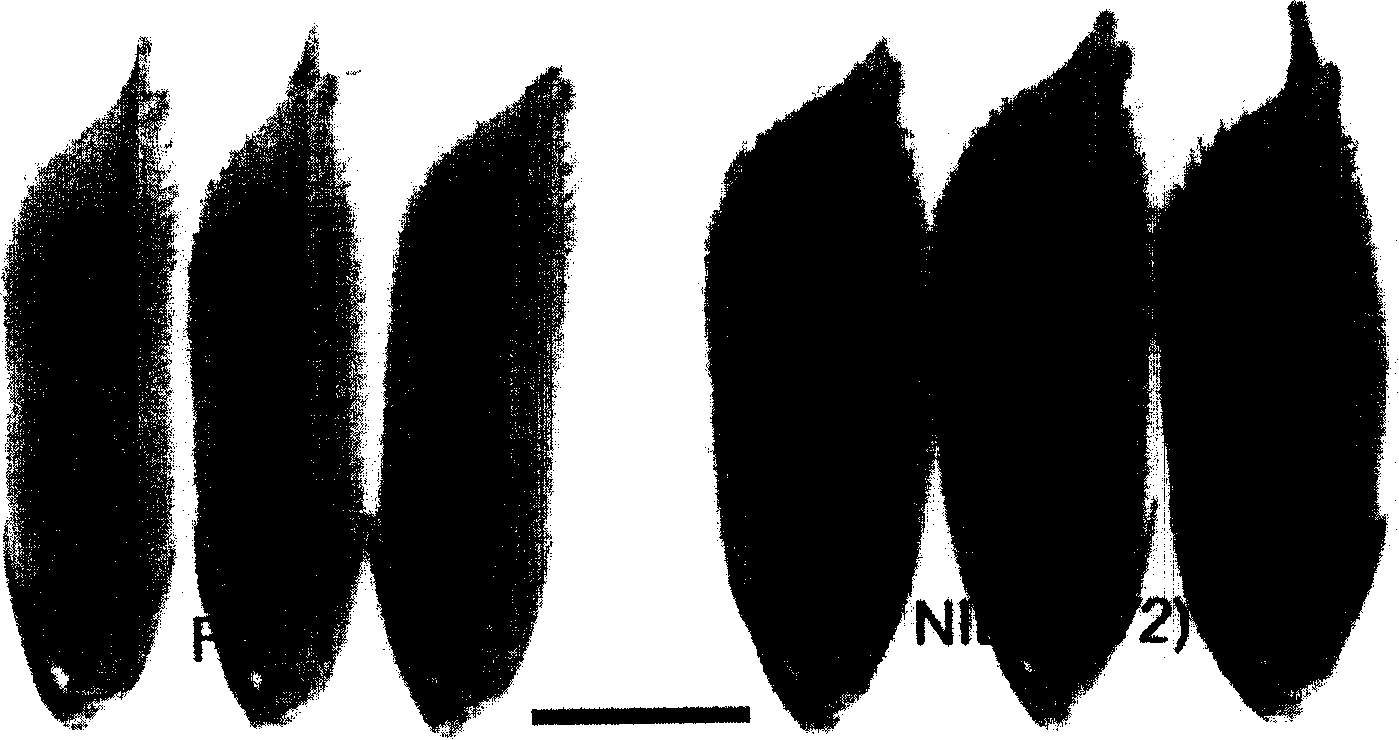Rice big grain gene and uses thereof
A technology encoding gene and grain weight, applied in the field of genetic technology and botany, can solve the problems of the cloning and function research of related genes controlling grain weight have not achieved real success, functional analysis and other problems
- Summary
- Abstract
- Description
- Claims
- Application Information
AI Technical Summary
Problems solved by technology
Method used
Image
Examples
Embodiment 1
[0098] The acquisition of embodiment 1 rice large-grain gene
[0099] WY3 is a giant-grain rice variety (thousand-grain weight of 48 grams), while Fengaizhan 1 (FAZ1) is a high-quality small-grain rice variety (thousand-grain weight is only 22 grams). The present inventors constructed a genetic population by crossing WY3 with Fengaizhan No. 1, and located a new gene (or QTL) GW2 controlling rice grain width and grain weight by using molecular markers. The gene is located on the second chromosome. The GW2 gene was further cloned by map-based cloning technology, its gene sequence is shown in SEQ ID NO: 1, and it encodes a protein containing 425 bases, as shown in SEQ ID NO: 2.
[0100] Sequence comparison analysis showed that there were 3 base mutations in the GW2 gene of the large-grain variety, 2 of which were base substitutions, but did not cause amino acid changes; and the other 1 mutation was a base in the fourth exon (A316 , the 316th position of ORF), the deletion caused...
Embodiment 2
[0138] Variation form of embodiment 2 rice large-grain gene
[0139] The present inventors took the rice variety "Zhonghua 11" as the research object, and obtained a variant gene of GW2 from the "Zhonghua 11" with a small-grain phenotype. →The T mutation leads to the premature appearance of the stop codon, resulting in the loss of part of the amino acid sequence of the encoded protein. The plant exhibited a small-grained phenotype, demonstrating that the function of the GW2 protein was maintained despite the deletion mutation.
[0140] The inventor took the rice variety "Huanghuazhan" as the research object, and obtained a mutant gene of GW2. The base 1041 of the gene (ORF 787) also undergoes a C→T mutation, and a stop codon appears in advance, resulting in The encoded protein lacks part of the amino acid sequence. The plant still showed the small-grain phenotype, that is, the function of the GW2 protein was maintained.
[0141] In addition, the present inventors also obtai...
Embodiment 3
[0143] Molecular marker-assisted selection breeding experiment of embodiment 3GW2
[0144] In this embodiment, PCR oligonucleotide primers (SEQ ID NO: 3 and SEQ ID NO: 4) are designed in the GW2 gene, and Taq enzyme is used to carry out PCR amplification of the DNA of large-grain varieties and small-grain varieties, and restriction endonuclease EcoR 1 restriction enzyme cuts the amplified product, detects through 1% agarose gel electrophoresis that there is DNA polymorphism (difference) between the large-grain variety and the small-grain variety, the molecular weight of the large-grain variety is 1.159kb, and the molecular weight of the small-grain variety is 0.88kb, therefore This primer was developed as a molecular marker to specifically identify the large-grain GW2 gene and the small-grain GW2 gene. The molecular marker can be used to quickly select individuals carrying large-grain genes in the offspring population of hybrids of large-grain varieties and small-grain varieti...
PUM
| Property | Measurement | Unit |
|---|---|---|
| Molecular weight | aaaaa | aaaaa |
| Molecular weight | aaaaa | aaaaa |
Abstract
Description
Claims
Application Information
 Login to View More
Login to View More - R&D
- Intellectual Property
- Life Sciences
- Materials
- Tech Scout
- Unparalleled Data Quality
- Higher Quality Content
- 60% Fewer Hallucinations
Browse by: Latest US Patents, China's latest patents, Technical Efficacy Thesaurus, Application Domain, Technology Topic, Popular Technical Reports.
© 2025 PatSnap. All rights reserved.Legal|Privacy policy|Modern Slavery Act Transparency Statement|Sitemap|About US| Contact US: help@patsnap.com



